Understanding Beach Dunes: Ecology and Recreation
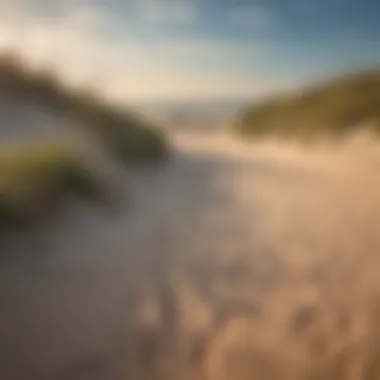
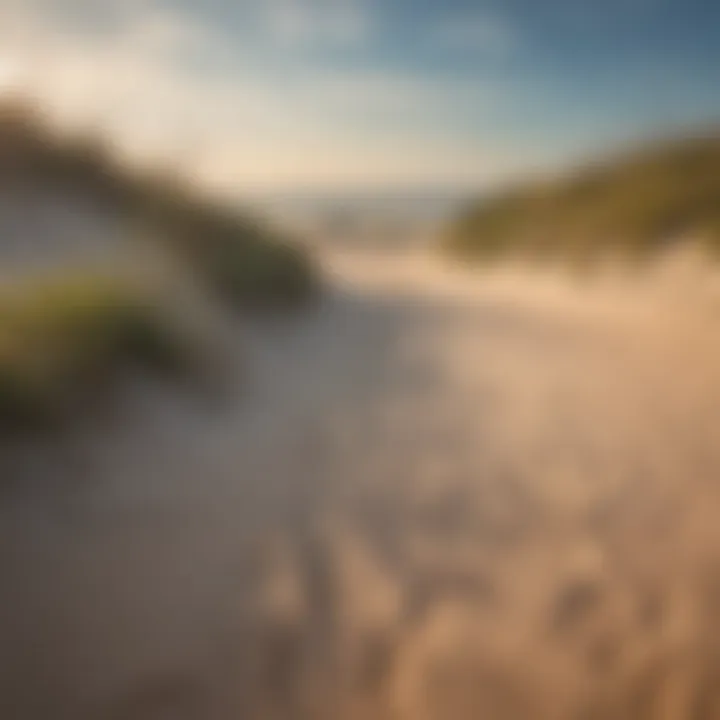
Intro
Beach dunes are more than just shifting mounds of sand; they are dynamic ecosystems that offer a plethora of ecological benefits and recreational opportunities. Positioned at the intersection of marine and terrestrial environments, these formations act as natural barriers against storms, help preserve water quality, and significantly contribute to biodiversity. From fragile coastal ecosystems teeming with specialized flora and fauna to active recreational spaces inviting adventurers, beach dunes play a critical role in both ecological balance and human enjoyment.
The significance of beach dunes cannot be overstated. They are homes to numerous plants and animals, some of which are found nowhere else. In addition, beach dunes serve as a natural buffer against harsh winds and waves, which can lead to coastal erosion. Exploring this multifaceted ecosystem not only aids in appreciating its value but also highlights the need for responsible interaction with these landscapes.
As we dive deeper into this exploration of beach dunes, we will touch on various themes related to their ecological significance, the recreational activities they offer, and the vital conservation efforts aimed at maintaining their integrity.
Join us as we unravel the beauty and importance of beach dunes, shedding light on how we can coexist with and protect these remarkable natural formations.
Understanding Beach Dunes
Understanding beach dunes is essential for both appreciating their ecological roles and recognizing the ways they support recreational activities. Beach dunes are not just mounds of sand; they are complex ecosystems that offer crucial protection against coastal erosion, act as habitats for various species, and create unique opportunities for people to engage with nature. As coastal environments face threats from climate change and human interference, an in-depth understanding of beach dunes can illuminate the necessity for protection and responsible use.
Definition and Characteristics
Beach dunes are naturally occurring formations built primarily from sand, often found along coastlines. They are delineated from beaches by their height and structure. A defining feature of these sandy hills is the vegetation that stabilizes them, such as grasses and shrubs. This plant cover plays a fundamental role in holding the sand in place, preventing shifting due to wind and waves. The character of a dune can also change with its proximity to the shoreline: foredunes are typically steep and close to the beach, while backdunes tend to be wider and more stable, often supporting diverse plant life.
Formation Processes
The formation of beach dunes is driven by a combination of wind, sand supply, and vegetation. Wind is the primary force; it picks up sand grains from the beach, then deposits them in coastal areas where plants can take root. Over time, these plants create a barrier effect that encourages sand accumulation, gradually building up the dune structure. This iterative process can result in various dune types, with each type embodying a unique formation story influenced by local environmental conditions.
Types of Beach Dunes
Beach dunes come in different shapes and sizes, classified mainly into parabolic, transverse, and longitudinal dunes. Each type holds distinct characteristics:
Parabolic Dunes
Parabolic dunes are U-shaped formations that often form in sandy coastal areas with a strong wind component. Their distinctive shape is formed due to the underlying vegetation, which traps sand and promotes growth. A key characteristic of parabolic dunes is their stabilization process, which can make them beneficial in controlling coastal erosion. However, they can also be susceptible to disturbance, particularly from human activities, making understanding their dynamics vital for conservation efforts.
Transverse Dunes
Transverse dunes appear as long ridges perpendicular to the wind direction. As wind moves sand, it creates these linear forms, often resulting in a series of dunes that can stand as natural barriers protecting inland areas. The key feature here is their alignment with wind patterns, which aids in maintaining their structure. They provide unique habitats for certain flora and fauna, showcasing their importance in maintaining coastal biodiversity. Though they are resilient, their size can vary based on environmental factors, making some landscapes more prone to changes than others.
Longitudinal Dunes
Longitudinal dunes, on the other hand, run parallel to prevailing winds and are typically more elongated. They form in environments where a combination of sand supply and wind energy facilitates their growth. Their key characteristic is the subtle ridges that can stretch for long distances. This structure contributes to unique microhabitats that can support diverse wildlife. However, their vastness can pose challenges in terms of management, as large dune systems often require comprehensive ecological understanding and maintenance strategies to balance human use and natural preservation.
By successfully understanding and interpreting the nuances of different types of beach dunes, researchers, conservationists, and the public can engage more profoundly with these ecosystems. \n \n> "Beach dunes serve as natural buffers against storms and erosion, showcasing their vital role in coastal management." \n
Ecological Significance of Beach Dunes
The ecological significance of beach dunes cannot be overstated. These natural formations serve as crucial components of coastal environments, acting as the first line of defense against erosion while nurturing a diverse array of plant and animal life. In the grand scheme of coastal ecosystems, beach dunes contribute to stability, protection, and biodiversity that user cannot overlook.
Biodiversity and Habitat
Flora Species Inhabiting Dunes
Beach dunes are home to a variety of flora species that are well adapted to the harsh conditions of sandy environments. These plants play a key role in dune stabilization. For example, beach grass, with its long roots, holds the sand together, thereby preventing erosion. Additionally, these grasses create a microhabitat for numerous organisms.
One notable characteristic of flora in dune ecosystems is their tolerance to salt spray and shifting sands. This makes them an ideal choice for dune environments, as they can survive where many other plants would struggle. The unique feature of these plants lies in their growth patterns, often growing close to the ground in dense clusters, which helps to shield younger plants from the wind.
However, despite their toughness, these species can be vulnerable to disturbances such as trampling and pollution, making their conservation critical in protecting the entire dune ecosystem.
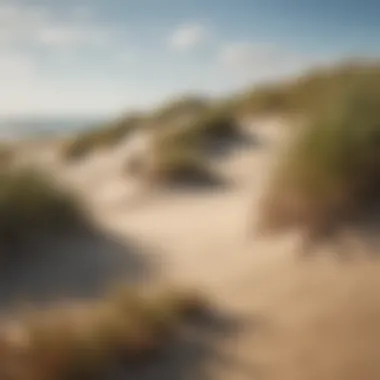
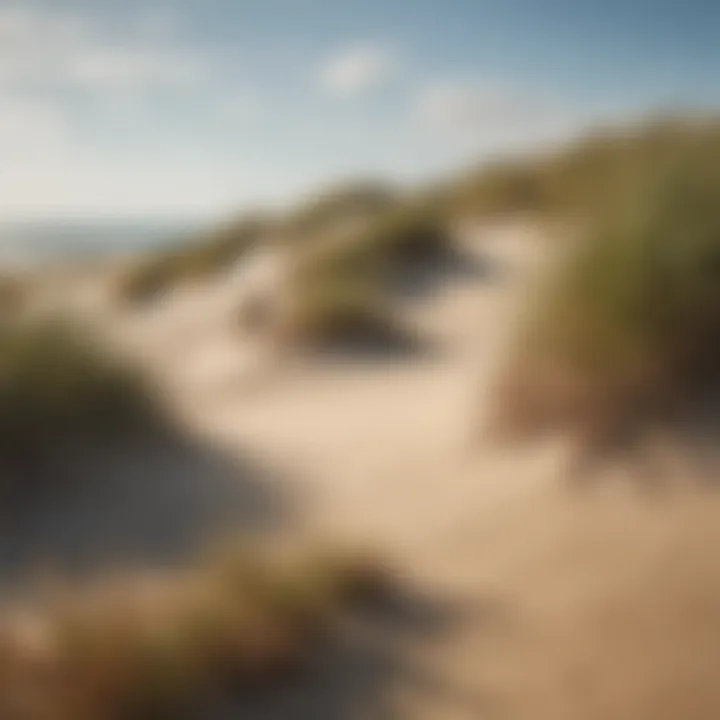
Fauna Relying on Dune Ecosystems
The dunes support a myriad of animal species that rely on their unique habitats for survival. Notably, many bird species, like the endangered Piping Plover, nest in the sandy areas of dunes. These habitats provide essential resources for birds as they depend on the dense vegetation for cover and food.
What makes fauna in dune ecosystems fascinating is their adaptability to extreme conditions where other creatures cannot thrive. The fauna are often specialized, with certain species evolving specific traits that allow them to thrive in sandy, saline environments.
The challenge these animals face includes habitat loss due to development and human activities. Protecting these habitats is key to sustaining these unique animal populations.
Natural Barriers Against Erosion
Beach dunes act as natural barriers that mitigate the impact of storms and high waves, absorbing energy and reducing the risk of coastal erosion. When these dunes are intact, they can buffer the force of coastal storms, helping to protect inland areas from flooding and property damage. This protective role cannot be taken for granted and emphasizes why maintaining dune health is crucial for surrounding ecosystems and communities.
Impact on Coastal Ecology
Link between Dunes and Marine Life
The relationship between beach dunes and marine life is intricate. Dunes play a role in filtering sediment and nutrients that eventually make their way into the ocean. This process helps maintain water quality and promotes the health of marine ecosystems.
One notable aspect of this link is how the organic material from decay in the dunes supports a range of microbial life that, in turn, influences marine food webs. Healthy dunes can be seen as gateways, allowing nutrients to flow into coastal waters and facilitating a balanced marine ecosystem.
By highlighting these connections, it becomes clear that the survival of marine species is inherently tied to the health of beach dunes, making their protection vital yet often overlooked.
Ecosystem Services Provided by Dunes
Beyond their role as habitats, dunes provide several ecosystem services that benefit both nature and humanity. They enhance the aesthetic value of coastal areas, supporting tourism while also providing natural spaces for activities such as hiking and wildlife observation.
Additionally, the dunes' role in capturing and storing carbon helps mitigate climate change. This characteristic underscores the importance of beach dunes in addressing contemporary environmental challenges.
In considering these roles, it's evident that the conservation and restoration of beach dunes are not only beneficial but necessary for sustainable coastal management.
Recreational Opportunities on Beach Dunes
Beach dunes offer a playground for various outdoor activities, blending nature's serenity with adrenaline-pumping adventures. Not only do they serve as ecological sanctuaries, but these sandy formations also present unique opportunities for recreation that can cater to everyone from casual strollers to hard-core nature aficionados. The essence of these recreational avenues lies in their ability to connect people with the local environment while encouraging physical activity and fostering an appreciation for natural landscapes.
Hiking and Exploration
Hiking along beach dunes can be an invigorating experience. The undulating landscapes provide a natural pathway, inviting exploration. As you ascend a dune's crest, the panoramic views can leave one breathless, combining the endless ocean with the vast sky. Various trails wind through these sandy stretches, differing in difficulty, which allows for a range of exploration styles.
- Benefits of hiking on dunes include:
- Physical fitness: Walking on uneven terrain engages different muscle groups, enhancing strength and balance.
- Mental clarity: The rhythmic movements often lead to a meditative state, providing respite from the everyday hustle and bustle.
- Education: As you hike, one can discover diverse flora and fauna, making a simple hike an enlightening endeavor.
While venturing out, hikers should keep in mind the susceptibility of these environments to erosion. Staying on marked trails is paramount to minimizing our impact on these fragile ecosystems.
Wildlife Observation
Beach dunes are intricate ecosystems rich with diverse wildlife. Observing the unique species adapted to this environment can be both thrilling and rewarding. From the tracks left in the sand by unseen creatures to the calls of birds soaring above, the dunes encapsulate a world of life just waiting to be explored.
- Key highlights for wildlife watching:
- Birdwatching: Dunes often attract various bird species. Migratory birds seek refuge in these habitats, offering enthusiasts a chance to spot rare species, especially during migration seasons.
- Land animals: Look closely and you might see rabbits, foxes, or even deer that adapt well to these coastal ecosystems.
- Marine life: The proximity to the sea means you can catch glimpses of tidal pool creatures during low tide, providing a different dimension to wildlife observation.
Being patient and quiet enhances the chances of successful wildlife observation. From the sound of rustling leaves to the distant cry of seagulls, the beach dunes provide an aural tapestry that enriches the observation experience.
Photography and Scenic Views
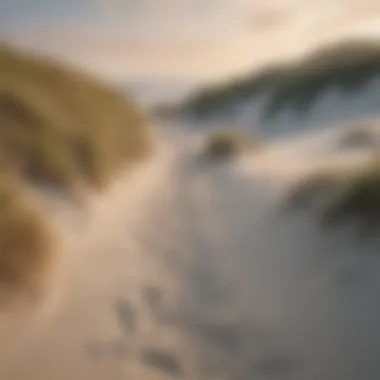

For photographers, beach dunes are a gold mine. The interplay of light and shadow on sand textures can create stunning images at different times of the day. Sunrise or sunset casts a warm glow across the landscape, accentuating the curves of the dunes.
- Tips for capturing the essence of beach dunes:
- Golden hour: The early morning and late afternoon light frames the dunes beautifully, enhancing colors and textures.
- Close-ups: Don't overlook details. The unique shapes of grasses or the movement of sand can tell a story all on their own.
- Wide-angle shots: Capturing the vastness of the dunes against the backdrop of the ocean can evoke a sense of place and inspire awe.
Photography in this setting is not just about snapping pictures; it’s about translating the experience into visual art that can communicate the beauty of these environments. Whether you’re a pro or an enthusiast, every frame can encapsulate a moment that narrates the essence of what beach dunes represent.
"Exploring beach dunes is an invitation to reconnect with nature and rediscover the thrill of outdoor adventures and the peacefulness of solitude."
Engaging with beach dunes through these recreational opportunities fosters a deeper connection with nature, highlighting the necessity to protect such ecosystems while enjoying their myriad offerings.
Beach Dunes and Watersports
Beach dunes serve not only as stunning natural landscapes but also as hubs for various watersports. The interplay between these dynamic coastal ecosystems and recreational activities creates unique experiences for outdoor enthusiasts. Engaging in watersports near beach dunes requires an understanding of the specific environment we’re navigating, offering both thrilling adventure and the chance to appreciate nature’s artistry. Watersports enliven the atmospheric charm of beach dunes while attracting numerous adventure seekers.
Surfing and Dune Dynamics
Surfing is more than just a sport; it’s an interaction with the ocean, shaped significantly by the nearby dune dynamics. The dunes act as natural barriers that can influence wave patterns and swells. For surfers, understanding these dynamics can be the difference between a lackluster surf session and catching the perfect wave.
- Wave Refraction: Waves can behave oddly as they approach the beach, with dunes sometimes amplifying the breaks. Surf spots near tall dunes may prove to be more advantageous on certain days, making knowledge of the local dune structure crucial.
- Wind Effects: The wind patterns created by the dunes can enhance or deter the surf conditions, affecting the swell direction and wave quality, which surfers need to be aware of to optimize their experience.
- Safety Considerations: If you're unaware of the shifting sands or erosion near dunes, it can lead to unexpected hazards. Always respect the dune systems; surf during low tide and avoid damaging the fragile vegetation.
Kayaking and Coastal Navigation
Kayaking along the coast offers an intimate way to explore beach dunes from the water's edge. The experience can be immensely rewarding, providing a unique vantage point to see flora and fauna up close. Here are some factors that highlight the synergy between kayaking and coastal navigation:
- Scenic Routes: Many coastal areas have hidden coves and gentle inlets that are only accessible by kayak. Paddling alongside dunes reveals intricate patterns of sand and shifting ecosystems.
- Environmental Awareness: By immersing yourself in this serene environment, you gain not just recreation but also insight into the coastal ecosystem's health. Paddling in these tranquil waters allows adventurers to observe diverse wildlife as it ventures out at dawn or dusk.
- Navigational Skills: For kayakers, being mindful of currents and tides is paramount. Knowledge of weather patterns can also enrich your navigation experience. It’s essential to remain alert and adapt to unexpected changes in the environment.
Wind Sports and Dune Wind Patterns
Beach dunes, with their heights and slopes, create a wind pattern that attracts wind sports enthusiasts. Kitesurfing, landboarding, and windsurfing thrive in these conditions, combining thrill and skill. Indeed, the unique geographical features of dunes allow for a diverse range of activities:
- Wind Consistency: Dunes often channel wind, creating predictable gusts — ideal for kitesurfers seeking the sweet spot for launches and tricks.
- Safety Precautions: While the thrill of riding high winds is undeniable, safety must come first. Understanding the wind's direction and its interaction with the landscape can help prevent accidents.
- Amplified Challenges and Skills: For those excited about landboarding, dunes provide both challenged slopes and the thrill of speed and elevation. Mastering these skills in such a setting offers an unmatched adrenaline rush.
"Adventuring around dune dynamics teaches us respect for nature and the joy of mastering these unique environments."
In summary, beach dunes contribute immensely to water sports, enhancing both the ecologic and recreational aspects of the coast. They are not merely a backdrop, but key players in crafting the experiences that thrill and inspire. Whether surfing, kayaking, or participating in wind sports, understanding the intricate relationship between these activities and the dunes can deepen one’s appreciation and enjoyment of nature’s offerings.
Threats to Beach Dunes
Beach dunes, while often viewed as natural wonders for recreation and ecosystems, face a variety of pressures that threaten their stability and integrity. Understanding these threats is crucial for anyone who cherishes both the beauty and functionality of coastal environments. This section will delve into three primary threats: climate change and erosion, pollution and human activity, and invasive species, each presenting its unique challenges and implications for beach dune conservation.
Climate Change and Erosion
As the planet warms, the effects of climate change resonate across ecosystems, and beach dunes are no exception. Rising sea levels posed by melting glaciers and polar ice present a direct threat to these coastal formations. Dunes that once acted as barriers against storm surges now face the harsh reality of erosion, jeopardizing their vital role in protecting inland areas.
Aside from rising seas, increased storm intensity can lead to enhanced erosion rates. Powerful waves battering the coastline can swiftly wear away dune structures that have taken years, even centuries, to develop. This unfortunate cycle not only diminishes the physical structure of the dunes but also alters the biodiversity associated with them—a critical factor for many species that call these dunes home.
For outdoor athletes and enthusiasts, this erosion may curtail certain activities, diminishing the scenic vistas once taken for granted. Even hobbies like photography could face limitations as familiar landscapes morph drastically under climate-related pressures.
Pollution and Human Activity
Human development often encroaches upon coastal environments, bringing with it pollution that can wreak havoc on dune ecosystems. Chemical runoff from agriculture and urbanized areas can seep into nearby waterways, leading to nutrient loading that disrupts the natural balance of the dune ecosystems. This could pave the way for algal blooms, which choke off the oxygen necessary for aquatic life.
In addition to chemical pollution, littering and plastic waste pose another significant challenge to beach dunes. Turtles may mistake plastic for food, while marine life can become ensnared in debris, highlighting the urgency for responsible recreational practices. The simple act of throwing waste into the designated bins rather than carelessly on the beach contributes to protecting these fragile environments.
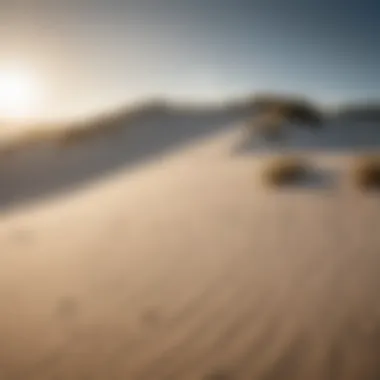

For those engaged in watersports or nature observation, a polluted dune ecosystem can mean less wildlife to observe or photograph, affecting the quality of their outdoor experiences. Thus, understanding how our actions impact beach dunes becomes key.
Invasive Species
Invasive species represent another formidable threat to the delicate balance of beach dunes. Often introduced through maritime traffic or human activities, these species can outcompete native flora and fauna, altering the delicate ecological web. For instance, the European beachgrass has been known to proliferate and dominate certain areas, changing the structure of the dunes and impacting native plants that are crucial for supporting local animal species.
As our ecosystems shift, both outdoor recreationists and conservationists must adapt. By being vigilant in recognizing and reporting invasive species, outdoor enthusiasts can play an integral role in preserving the unique character of beach dune habitats.
"The true beauty of beach dunes lies not only in their picturesque landscapes but also in their vital role in coastal ecosystems that demand our attention and respect."
Conservation of Beach Dunes
Conserving beach dunes is crucial for maintaining not just the delicate ecosystems they support, but also the recreational opportunities they provide. Beach dunes are not just a pretty face by the sea; they serve as nature’s shields against erosion and flooding. Their preservation enhances the quality of the coastline, ensuring it remains a thriving habitat while offering spaces for human enjoyment. When we think about conservation, we paint a picture that encompasses ecosystem health, local economies, and the sheer joy of coastal life.
Management Practices
Effective management practices are the backbone of dune conservation. These practices range from the restoration of damaged dunes to the implementation of protective measures against erosion. One of the key strategies involves planting native vegetation. This roots down deep in the sand, providing stability and reducing wind erosion. For instance, using species like sea oats or beach grass not only helps in holding the sand together, but also serves as a food source for various wildlife.
In addition, active monitoring of both human activity and environmental changes is vital. Creating designated paths for walkers can prevent trampling in sensitive spots, allowing flora and fauna to flourish. Moreover, the introduction of sand fencing has been beneficial in directing natural sand movement, promoting new dune formation. These actions fuzzle into a comprehensive approach to keep dunes healthy and robust.
Community Involvement
When it comes to the conservation of beach dunes, community involvement is a game changer. Local communities are the eyes and ears on the ground, and their participation can lead to greater awareness and action. Educational programs aimed at locals can go a long way. Simple workshops or beach clean-up drives not only benefit the environment but also foster a sense of ownership and pride within the community.
Even social media platforms can serve as powerful tools for mobilization. Groups formed on platforms like Facebook can organize events that directly involve the public in conservation efforts. Sharing stories of successful dune restoration on Reddit encourages more individuals to participate, building a collective movement around preserving these vital ecosystems. When community voices amplify the call for conservation, it becomes difficult for policymakers to ignore.
Policy Frameworks
Conservation isn't just about what we do on the ground; it’s also about the policies that shape our actions. A sound policy framework is essential for the long-term sustainability of beach dunes. This involves collaboration between various stakeholders including local governments, environmental organizations, and scientists. Policies must focus on protecting existing dunes as well as addressing emerging threats such as climate change and increasing human activity along coastlines.
For instance, implementing zoning laws that restrict development near dunes can greatly reduce habitat loss. Encouraging public participation in policymaking ensures that the views of those who live near these environments are heard, ultimately leading to more effective and inclusive policies.
Moreover, funding for conservation projects needs to be part of these frameworks. Establishing grants for research into dune ecology or providing financial support for restoration projects can make a big difference. Ultimately, when policies are well-structured, they substantiate the groundwork set by local efforts, leading to a cohesive strategy for beach dune conservation that can withstand modern challenges.
"Preserving beach dunes requires a tapestry of actions, threads woven together by community efforts, effective management, and resilient policy frameworks."
Engaging in the conservation of beach dunes is not merely an option; it’s an obligation we owe to nature and future generations. Every stride taken in their defense solidifies the foundation for sustainable recreation and ecological balance.
Future Perspectives on Beach Dunes
As we gaze into the horizon of beach dune conservation, it's clear that understanding and fostering these natural structures become even more critical. The dynamic interplay between climate change, human activities, and the natural world sets the stage for unprecedented challenges and opportunities.
The importance of this topic in the broader context lies in recognizing where we stand today in relation to beach dunes, assessing their health, and contemplating the innovations that can guide us in protecting these ecosystems for future generations. One significant aspect is marrying ecological understanding with technological advancements, which can offer innovative methods for conservation.
Research and Innovations
Research endeavors surrounding beach dunes are increasingly pivotal. Innovative studies focus on the adaptive capacity of dune systems to climate change, shedding light on potential resilience strategies. For instance, remote sensing technology allows for real-time monitoring of dune movements and health. This data can inform restoration projects or adaptations to management practices.
Researchers are also investigating plant species that can better withstand harsh conditions, optimizing replanting efforts after erosion. Integrating genetic research with ecological practices might lead to the cultivation of more robust flora that can thrive in shifting climates.
Additionally, engaging with local communities in citizen science projects fosters a sense of stewardship and collects valuable data on dune health. These initiatives help people connect with their environment and understand its complexities, making the conversation about dunes and their welfare more personalized and widespread.
Sustainable Tourism Practices
Sustainable tourism practices offer a dual benefit: they create enjoyable experiences for visitors while safeguarding the ecological integrity of beach dunes. Promoting responsible outdoor activities is key, such as encouraging the use of marked trails for hiking or designated areas for birdwatching. This practice protects flora and fauna that are often the backdrop of these recreational activities.
Creating educational programs that highlight the significance of beach dunes as ecological frontiers can also enhance visitor awareness and appreciation. Workshops or guided tours led by local experts can show tourists how to engage with these ecosystems responsibly.
Furthermore, employing low-impact infrastructure (e.g., boardwalks or viewing platforms) minimizes human footprint on sensitive areas.
"Balancing recreation with conservation is not merely a goal but a necessity for the sustained health of beach dunes and the joy they bring to us all."















